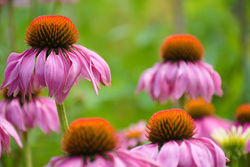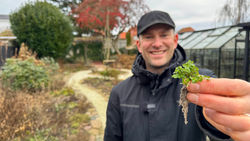Can you cut the leaves off of Alliums?
- Lars Wildes
- May 30, 2024
- 3 min read
Alliums, with their beautiful, globe-shaped flower heads, tall stems and easy maintenance, are a favorite among cottage gardeners. If you’re new to gardening and have found yourself enchanted by these beauties, you might be wondering about the care and maintenance of alliums, especially when it comes to their foliage.
One common question is: Can you cut the leaves off of alliums? The answer is yes, you can. Let’s dive into the details to understand when and how to do this properly.
Understanding Alliums
Alliums belong to the same family as onions, garlic, and chives, which explains their unique, often pungent aroma. They are grown primarily for their stunning flowers that add a bold statement to any garden. Blooming in late spring to early summer, these flowers can range from small, delicate heads to large, dramatic globes that stand tall above the garden bed.
The Role of Allium Foliage
The leaves of alliums are long, slender, and typically grow at the base of the plant. While the flowers are the main attraction, the foliage plays a crucial role in the health of the plant. The leaves perform photosynthesis, converting sunlight into energy, which helps the plant grow and produce its beautiful blooms.
When to Cut the Leaves
After the allium has finished blooming, the flowers will gradually fade and die back. At this point, you might notice the leaves starting to turn yellow and wither. This is a natural part of the plant’s life cycle, and it indicates that the plant is beginning to go dormant.
Timing is Key: You can cut the leaves off of alliums once they have turned yellow and started to die back. Cutting them too early, while they are still green, can rob the plant of essential nutrients that are being transferred from the leaves to the bulb for next year's growth.
How to Cut the Leaves
1. Wait for the Right Time: Allow the leaves to turn yellow and wither. You do not have to wait for them to die back completely. This typically happens a few weeks after the blooms have faded.
2. Use Clean, Sharp Tools: Use a pair of clean, sharp garden scissors or pruners to avoid damaging the plant or spreading disease.
3. Cut Close to the Base: Trim the leaves close to the base of the plant, but be careful not to cut into the bulb itself.
4. Dispose of Cuttings: Remove the cut foliage from the garden bed to keep the area tidy and to prevent any potential disease or pest issues.
Benefits of Cutting the Leaves
Tidy Appearance: Removing the withered leaves keeps your garden looking neat and well-maintained.
Healthier Bulbs: Allowing the foliage to die back naturally ensures that the bulbs store the maximum amount of energy for the next growing season.
Prevents Disease: Old, decaying leaves can harbor pests and diseases, so removing them helps keep your garden healthy.
Final Tips for Allium Care
Planting Depth: When planting alliums, ensure the bulbs are planted at a depth of about 2-3 times their diameter to protect them from frost and provide stability.
Well-Draining Soil: Alliums prefer well-draining soil to prevent bulb rot. Amend your garden bed with compost if necessary to improve drainage.
Sunlight: These plants thrive in full sun, so choose a spot in your garden that gets at least 6 hours of sunlight a day.
By following these simple tips, you can enjoy the vibrant blooms of alliums year after year, and keep your garden looking its best even after the flowers have faded. Happy gardening!






Comentários